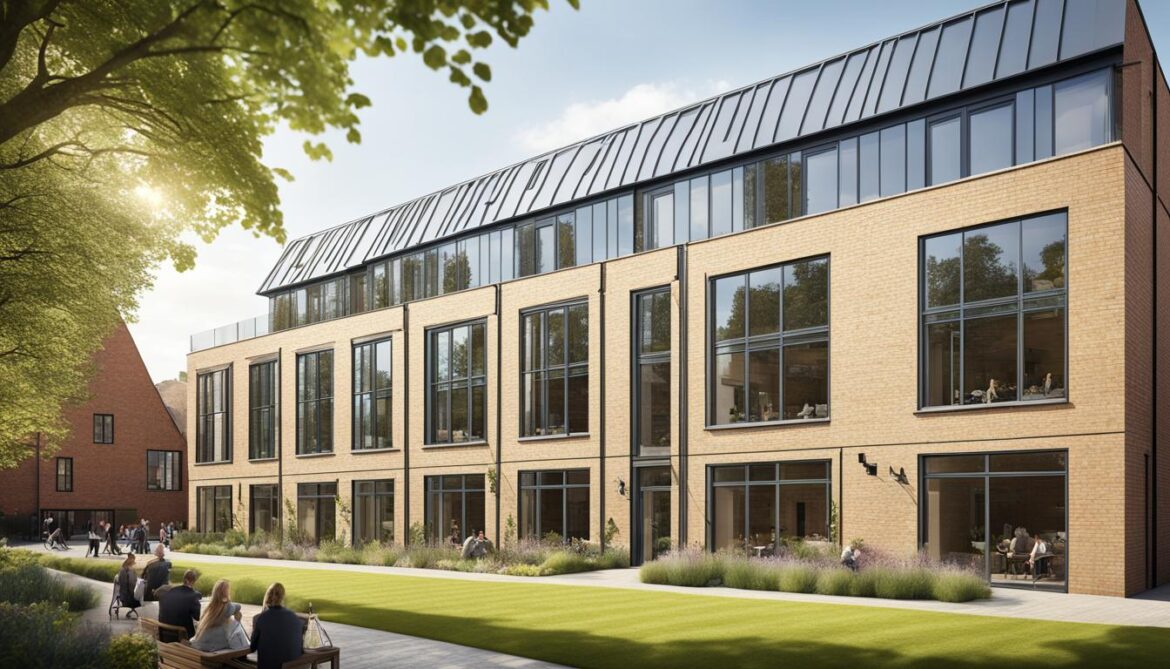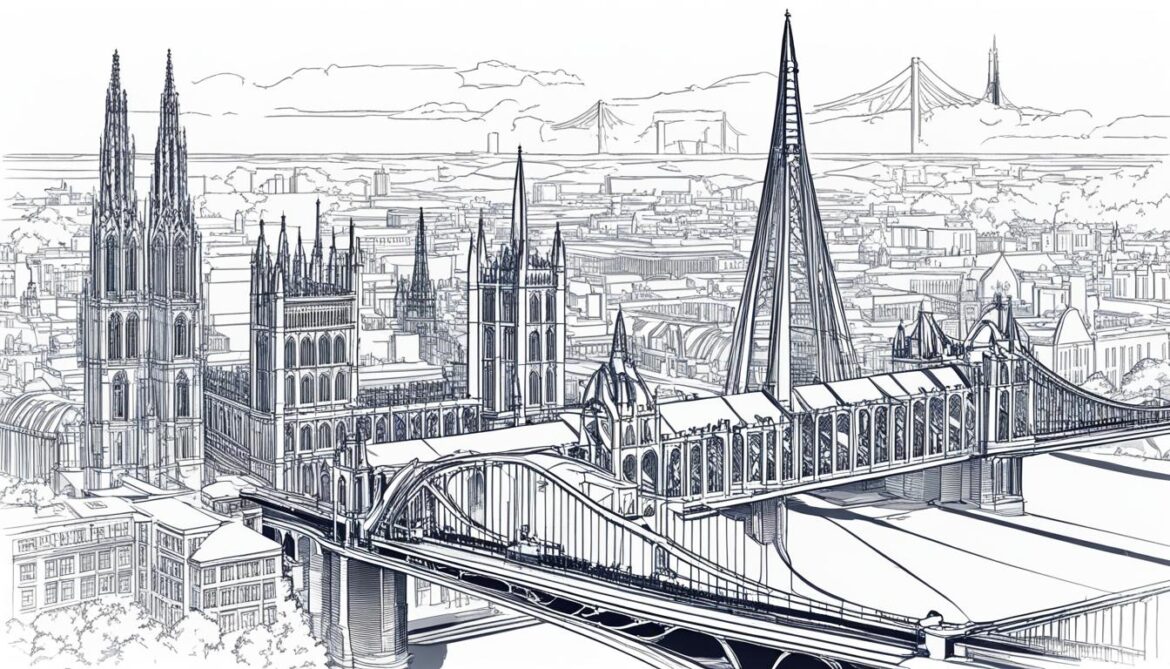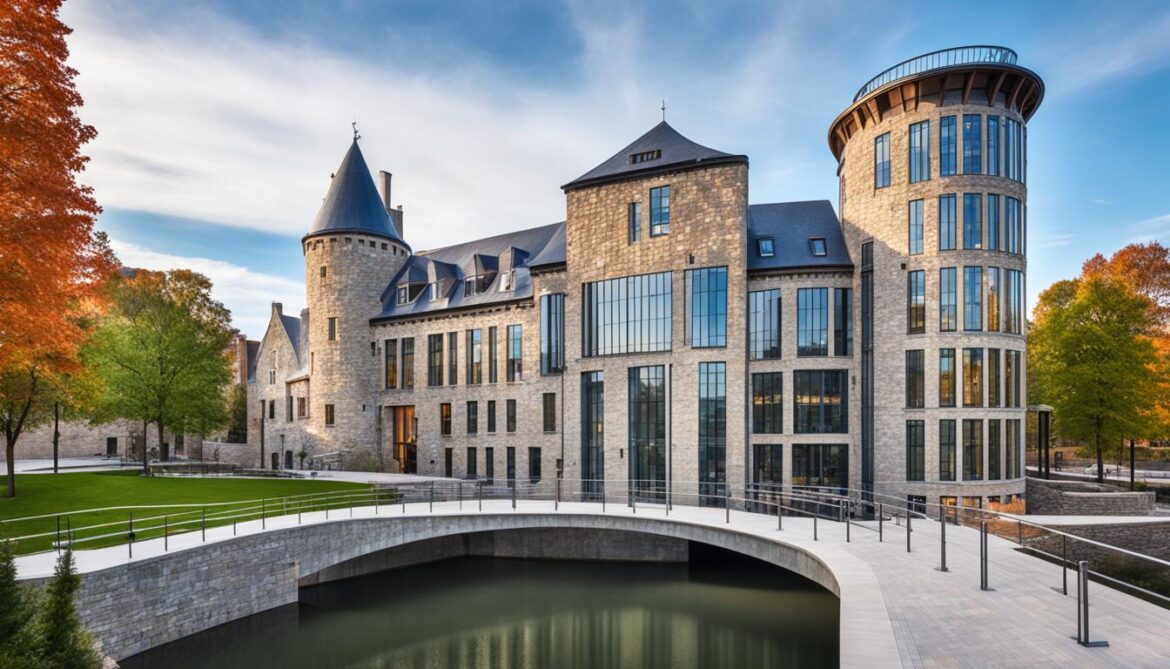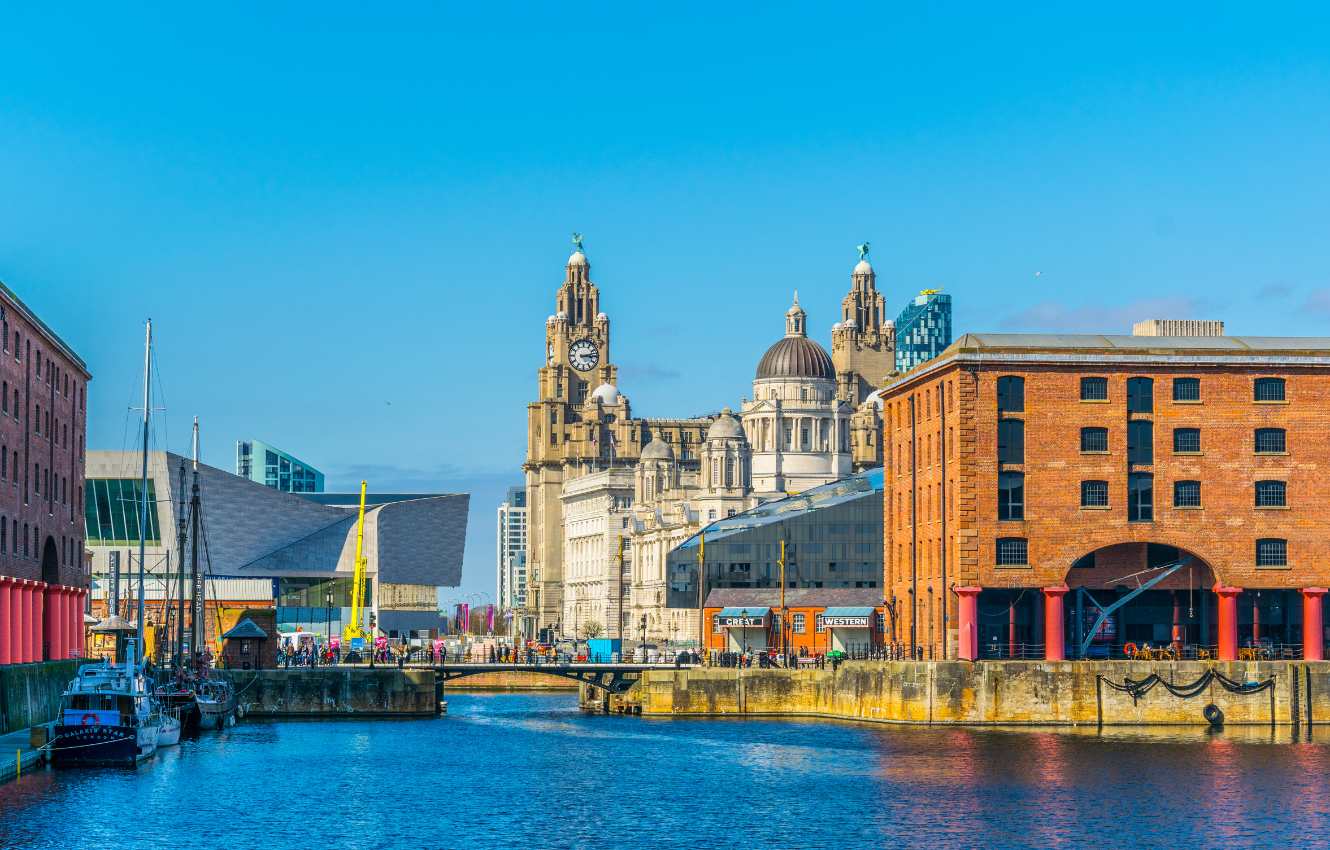In this article, we will explore various ways in which professionals like you can contribute to English history and heritage. We will discuss how you can incorporate English history into modern design practices, preserving the past while creating innovative structures that meet the needs of the present. Furthermore, we will highlight the importance of sustainable architecture, eco-friendly materials, and designs that minimise environmental impact.
Additionally, we will delve into the role of landscape architecture in promoting biodiversity and preserving English heritage. We will explore how landscape architects can design outdoor spaces that reflect the cultural heritage of England while providing habitats for diverse flora and fauna.
Moreover, we will discuss the significant impact of engineering on English architecture, showcasing historical engineering feats and modern techniques for restoring ancient structures. By leveraging engineering expertise, we can ensure the preservation of English architectural heritage for generations to come.
Lastly, we will explore how construction professionals can blend innovative techniques and technologies with the preservation of historical elements. We will showcase case studies of past projects that have enriched English heritage, demonstrating the power of construction to create structures that embrace the spirit of the past while embracing the future.
If you are passionate about English history, sustainability, and creating meaningful spaces, we invite you to join our esteemed team of architects, landscape architects, engineers, and constructors. Together, let’s shape the future while honouring the past in the built environment.
Incorporating English History in Modern Design
In this section, we will delve into the concept of incorporating English history into modern design practices. By drawing inspiration from historical architecture and heritage sites, architects and designers can create contemporary structures that pay homage to the past while fulfilling the needs of the present.
When it comes to modern design, understanding and integrating elements of English history is crucial. By seamlessly blending historical and contemporary influences, professionals can create unique and meaningful spaces that celebrate the country’s rich cultural heritage.
By exploring and analyzing historical architectural styles, designers can gain valuable insights into the principles and aesthetics that have shaped English history. Whether it’s the grandeur of Gothic architecture or the simplicity of Georgian design, these historical references can serve as a foundation for innovative and culturally significant modern designs.

Additionally, heritage sites can provide a wealth of inspiration for architects and designers. By visiting and studying these locations, professionals can gain a deeper understanding of the historical context and unique characteristics that define English history.
Integrating English history into modern design requires a careful balance. It’s about capturing the essence of the past while embracing the possibilities of the future. Through this approach, professionals can create spaces that not only evoke a sense of nostalgia but also push the boundaries of architectural innovation.
In the next section, we will explore the role of sustainable architecture in preserving English heritage, showcasing how the integration of eco-friendly materials and modern sustainability practices can contribute to the preservation of the country’s rich history.
Preserving English Heritage Through Sustainable Architecture
In the quest to preserve the rich history and heritage of England, sustainable architecture emerges as a vital solution. By embracing eco-friendly materials and minimizing environmental impact, architects can seamlessly integrate historical aesthetics with modern sustainability principles, creating architectural marvels that honor English heritage.
The Role of Eco-Friendly Materials
Eco-friendly materials are key in sustainable architecture, reducing the negative environmental impact associated with construction projects. By utilizing materials that are renewable, recyclable, and energy-efficient, architects can significantly decrease the carbon footprint of their designs, while still maintaining the historical authenticity and aesthetic appeal of English heritage.

Designs That Minimize Environmental Impact
Designs that minimize environmental impact are at the core of sustainable architecture. By employing strategies such as passive heating and cooling, efficient insulation, and water management systems, architects can reduce energy consumption and waste generation. These environmentally conscious designs not only serve as guardians of English heritage but also contribute to a more sustainable and resilient future.
Integrating Historical Aesthetics with Modern Sustainability
Integrating historical aesthetics with modern sustainability allows architects to pay homage to English heritage while embracing 21st-century design principles. By carefully blending historical elements with innovative techniques, architects can create buildings and structures that seamlessly blend into their surroundings, harmonizing the past with the present. This fusion of historical aesthetics and modern sustainability ensures that English heritage remains alive and celebrated for generations to come.
Beyond Buildings: Landscape Architecture and Biodiversity
In addition to shaping the built environment, landscape architecture plays a crucial role in preserving English history and promoting biodiversity. Landscape architects have the unique opportunity to design outdoor spaces that not only reflect the cultural heritage of England but also provide habitats for diverse flora and fauna.
By incorporating historically significant elements into their designs and prioritizing biodiversity, these professionals contribute to the conservation of English history and the natural environment. The careful selection of indigenous plants and the creation of sustainable habitats can help restore and protect the delicate ecosystems that are intertwined with the country’s historical sites. From historic gardens and parks to urban green spaces, landscape architects craft landscapes that harmonize with English history while promoting ecological sustainability.
The Impact of Engineering on English Architecture
The field of engineering has had a significant impact on the development and evolution of English architecture. Throughout history, engineers have played a crucial role in shaping the architectural landscape of the country, leaving behind remarkable engineering feats that continue to inspire and awe. From ancient structures to modern restoration techniques, engineering has been instrumental in preserving and enhancing the rich architectural heritage of England.
Historical Engineering Feats in England
England is home to numerous historical engineering feats that have left an indelible mark on its architectural history. From the iconic Stonehenge to the awe-inspiring Roman aqueducts, these ancient structures showcase the advanced engineering skills of their time. The innovation, precision, and ingenuity demonstrated in the construction of these monumental structures stand as a testament to the engineering prowess of the past.

Modern Techniques for Restoring Ancient Structures
In order to preserve the integrity of ancient structures and maintain their historical significance, modern engineering techniques are employed for restoration and conservation. These techniques leverage advanced technology and engineering expertise to ensure that ancient structures are protected from deterioration and damage. By implementing cutting-edge methodologies such as non-destructive testing, structural analysis, and innovative material solutions, engineers strive to revive ancient architectural marvels while respecting their historical context.
Constructing the Future While Honouring the Past
In the realm of English history, construction professionals have a unique opportunity to shape the future while honouring the rich past. By embracing innovative techniques and technologies, constructors can seamlessly blend progress with the preservation of historical elements, creating structures that embody the spirit of English heritage.
As the world progresses and architectural trends evolve, it becomes increasingly important to strike a balance between contemporary design and the preservation of our cultural legacy. Construction professionals have the power to transform the built environment, seamlessly weaving together the past and the future to create spaces that resonate with history while meeting the needs of modern society.
The integration of historical elements in construction projects not only pays homage to English history but also fosters a sense of place and continuity. By incorporating architectural features that echo the past, constructors can create a tangible connection between the present and the history that came before, grounding new developments in a rich and storied context.
While embracing the past, construction professionals must also embrace the advancements of the future. Innovative techniques and technologies enable constructors to push the boundaries of design and sustainability, creating structures that are not only visually striking but also ecologically responsible.

Whether it’s the use of sustainable materials, the implementation of green technologies, or the adoption of efficient construction processes, the future of construction lies in the intersection of progress and heritage. By prioritizing sustainability and incorporating new methodologies, constructors can ensure that their projects leave a positive and lasting impact on the environment.
Ultimately, constructing the future while honouring the past is about recognizing that English history is a living, breathing entity that continues to shape our present and future. As constructors, it is our responsibility to contribute to the preservation and celebration of this heritage by creating spaces that reflect the values and stories of generations past, while embracing the limitless potential of tomorrow.
English History as an Inspirational Canvas for Construction
Construction projects have long been inspired by the rich tapestry of English history. The melding of old and new in architectural design allows professionals to create structures that pay homage to the past while embracing innovation and progress.
Melding Old and New in Construction Projects
The concept of melding old and new in construction projects is a testament to the enduring legacy of English history. By blending historical elements with contemporary design, architects and constructors can create spaces that harmoniously reflect the spirit of the past while meeting the needs of the present. Whether it’s incorporating traditional architectural features into modern structures or repurposing historical buildings for new uses, the fusion of old and new adds a unique character and timeless appeal to construction projects.

Case Studies: Past Projects That Have Enriched English Heritage
Several case studies demonstrate how construction projects have successfully enriched English heritage by drawing inspiration from history. One notable example is the restoration of the Elizabeth Tower, commonly known as Big Ben, which preserved its iconic Victorian architectural features while implementing modern technological advancements. Another case study is the design and construction of The Shard, a skyscraper that seamlessly integrates with its historic surroundings, including the nearby Tower of London.
These case studies showcase the ingenuity and creativity of construction professionals in leveraging English history to create impactful and meaningful structures. By preserving and celebrating the country’s heritage, these projects contribute to the cultural fabric of England and inspire future generations.
Creating Nature Positive Spaces in Urban Environments
In this section, we will discuss the concept of creating nature positive spaces in urban environments and how it relates to English history. We will explore how architects, landscape architects, and urban designers can integrate nature into cities, promoting biodiversity, community engagement, and ecological sustainability.
Designing for Wildlife in the Heart of Cities
Designing urban spaces that prioritize wildlife habitats and encourage biodiversity is essential. By incorporating green infrastructure, such as rooftop gardens, vertical green walls, and wildlife-friendly landscaping, professionals can create environments that provide food, water, and shelter for local wildlife species.
Innovating Public Spaces for Community and Ecology
Public spaces play a vital role in fostering community engagement and ecological sustainability in urban areas. By designing parks, plazas, and green corridors that promote social interaction and incorporate sustainable features like rain gardens and permeable surfaces, professionals can create inclusive spaces that enhance the well-being of both people and the environment.
Conclusion
In conclusion, this article has explored the various ways in which architects, landscape architects, engineers, and constructors can actively contribute to English history by incorporating the rich heritage of the country into their work. By embracing the cultural significance and historical context of England, these professionals have the unique opportunity to shape the architectural and engineering landscape of the country for generations to come.
We have discussed the importance of sustainable architecture as a means to preserve English heritage while minimizing environmental impact. The use of eco-friendly materials and the integration of modern sustainability principles with historical aesthetics are crucial for creating harmonious and socially responsible architectural solutions that stand the test of time.
Furthermore, we have highlighted the role of landscape architecture in promoting biodiversity and protecting the natural environment. By designing outdoor spaces that reflect the historical and cultural significance of England, landscape architects can contribute to the conservation of both the built and natural heritage of the country.
Lastly, the article has emphasized the significance of blending old and new in construction projects and creating nature-positive spaces in urban environments. By melding historical elements with innovative design concepts and embracing nature within cities, architects, landscape architects, engineers, and constructors can create vibrant, sustainable, and community-oriented spaces that honor English history while shaping a better future.























Post comments (0)